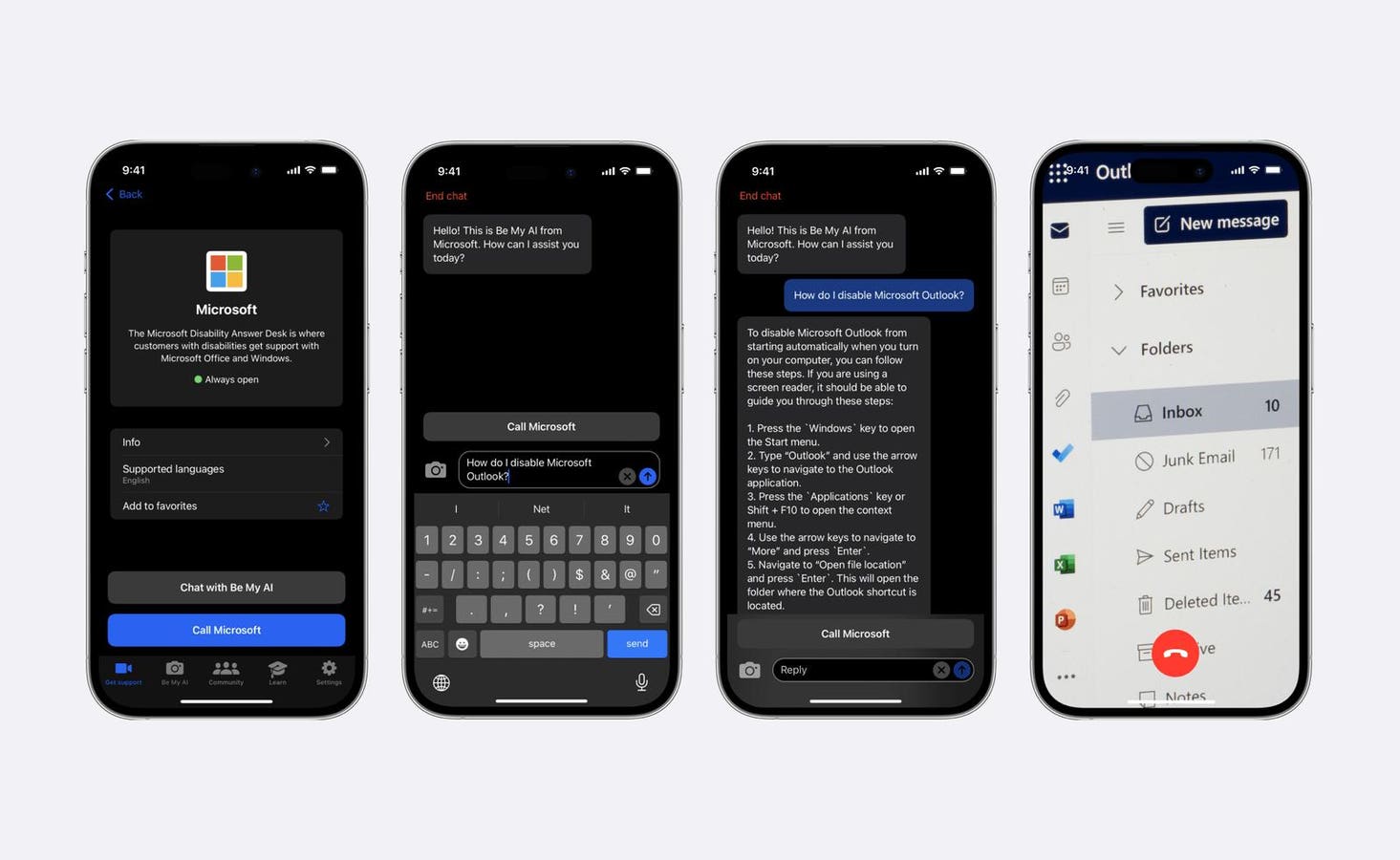In a blog post published this week, accessibility company Be My Eyes announced the advent of Be My AI in its first contact center. The company, which describes Be My AI as “an AI tool that helps vividly describe images for those who are blind, and helps companies provide state-of-the-art description services for blind and low vision customers,” touts itself as “the first to globally deploy AI-powered visual customer service for individuals who are blind or have low vision through Microsoft’s Disability Answer Desk.” Be My AI is powered by OpenAI’s GPT-4 model and is available 24 hours a day, 7 days a week.
“Beginning this month, Microsoft Disability Answer Desk callers who are blind or low vision can now use Be My AI to handle all types of customer service calls, involving highly complex use cases on everything from Excel spreadsheet formulas and interpreting product instructions and diagrams, to rebooting a laptop or installing and updating software, and much more,” Be My Eyes said in part in describing the technology in its announcement. “This is the first use of AI accepting image inputs to augment traditional customer service for people with disabilities.”
Be My Eyes, which has been the subject of coverage in this column multiple times in the past, is a service that helps Blind and low vision people read physical labels such as the expiration date on a carton of milk. The service, with apps on iOS and Android, enlists sighted volunteers to help users “see” said expiration date or any other label.
Be My Eyes chairman and chief executive officer, Mike Buckley, told me in a series of text messages earlier this week that the company is excited by this new integration, telling me in part the deployment in enterprises across the globe “[makes] customer service not only more accessible, but more successful.” He added the news is importance because conventional customer service is “a major pain point” for Blind and low vision people and Be My Eyes sought to “fix that… quickly and inexpensively.” Broadly, Buckley told me the Be My AI integration is further validation of the potential for AI to do genuine good for the world. Be My Eyes was a legitimately useful assistive technology before, but is now even better for the Blind and low vision community.
In the post, Be My Eyes attributes the global rollout’s success to what it calls the “3S Success Criteria.” The first S, for success, reflects a “90% successful resolution rate” with only 10% of users choosing to escalate calls to an actual human. The second S, for speed, finds issues being resolved in a third of the time; 4 minutes for Be My AI versus 12 minutes for live agent support. Lastly, the third S, for satisfaction, notes customer satisfaction ratings have improved, with an average of 4.85 stars out of 5.
“I think we’re now seeing confirmation of what we thought might be possible [with AI]. There is more innovation coming soon,” Buckley said.
National Federation of the Blind president Mark Riccobono agrees.
“The large and growing number of blind and low vision people globally, roughly equivalent to the population of the United States, means every company, non-profit, academic institution, and public sector organization has both a moral and business imperative to better serve our community,” he said in a statement included in Be My Eyes’ post. “The deep commitment of Be My Eyes to have their product development driven by the lived experience of blind people is truly transformative. As a result, Be My AI™ is one of the most exciting technological assistance solutions we have ever evaluated, and given the initial results in the customer service environment, which has historically been a significant source of frustration for blind consumers, we encourage every organization to evaluate this remarkable tool as an important option.”
Be My Eyes posted a video about the Be My AI news to YouTube. The company also has shared an audio-described version.
Read the full article here





